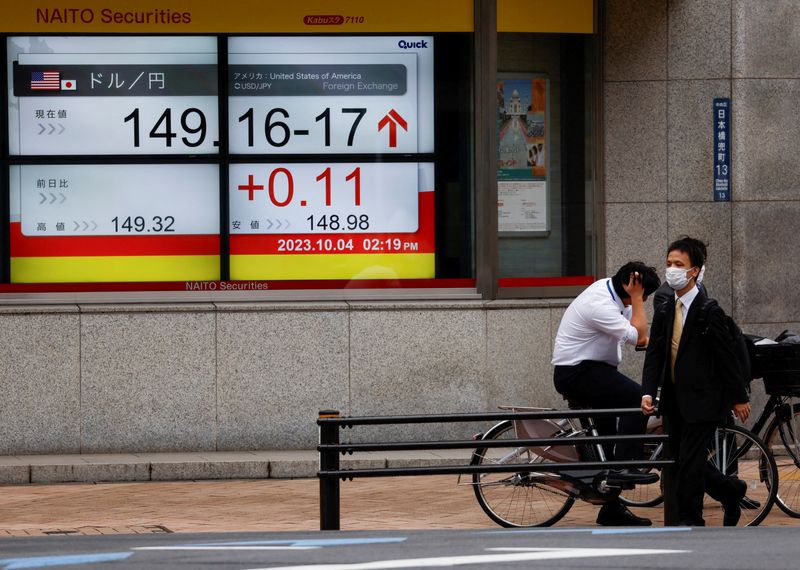By Jamie McGeever
(Reuters) - A look at the day ahead in Asian markets from Jamie McGeever, financial markets columnist.
Asian markets are poised to rebound on Thursday following a relief bounce around the world on Wednesday, with currency traders also bracing for a batch of inflation reports from across the continent.
Consumer price data from South Korea, the Philippines, Thailand, and Taiwan should give their respective exchange rates a nudge on Thursday, while Australian trade figures and retail sales from Singapore are also on tap.
Broadly speaking though, Asian market sentiment and direction will again be driven by global factors. Especially the U.S. government bond market.
The biggest fall in the 10-year Treasury yield since Aug. 29 on Wednesday helped ease the stress that has built up in world markets recently - the dollar fell, Wall Street roared back, and oil prices tumbled.
Oil's slump is particularly noteworthy - crude fell 5.5% to a one-month low. That was its biggest fall in over a year and completely wipes out its year-on-year gains - oil is no longer inflationary.
While the relief is no doubt welcome, investors know it may not last. Global currency volatility on Wednesday spiked to its highest since May, a day after U.S. Treasury market volatility also jumped to a five-month high.
And although U.S. yields fell across the board, yield curve steepening continued as the 30-year yield pierced 5.00%. This rapid unwinding of curve flattening trades is likely to be hurting many speculators and leveraged funds.
The so-called 'term premium' - the compensation investors demand for taking on greater risk by holding long-dated bonds - continues to rise.
Japanese assets, meanwhile, will also be sensitive to possible Bank of Japan activity in the domestic government bond or currency markets on Thursday.
The yen steadied on Wednesday but is still languishing near 150.00 per dollar, the break of which triggered waves of yen buying on Tuesday. Tokyo is not thought to have intervened, although that might be confirmed in Bank of Japan data on Thursday.
An esoteric corner of Japanese markets - yen cross-currency basis - is at levels consistent with previous bouts of volatility. This is a broad measure of overseas demand for dollars and market stress, and the deeply negative 'basis' now is similar to late 2019, Japan's FX intervention last year and the U.S. regional bank crisis this year.
Japan's Nikkei should rebound after slumping 2.3% on Tuesday, matching its biggest fall this year.
But it will take more than one up day to reverse the momentum - the index is down 10 out of the last 12 trading sessions, squeezed by the highest 10-year domestic bond yield in a decade, and now also by the sudden burst of yen appreciation.
Here are key developments that could provide more direction to markets on Thursday:
- South Korea, Philippines, Thailand inflation (August)

- India services PMI (September)
- Australia trade balance (August)
(By Jamie McGeever; Editing by Josie Kao)